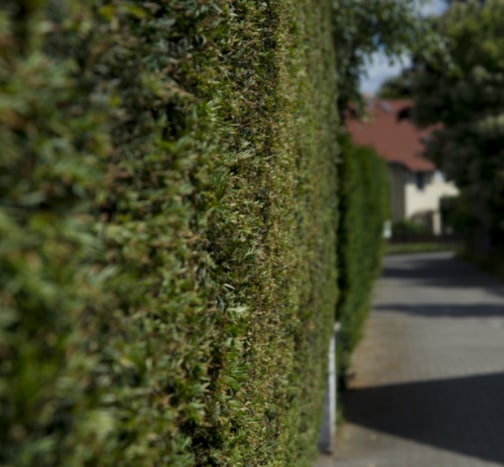Large, historic trees are an essential part of our landscapes, offering beauty, history, and ecological benefits. Preserving these trees, however, requires specialised care and expertise. Tree surgery plays a critical role in maintaining the integrity and longevity of these magnificent specimens, particularly when they are located in places like Ramsgate, Kent, where environmental conditions and urban developments may pose challenges. At Ramsgate Tree Surgeons, we provide expert tree surgery services aimed at preserving the health and structural integrity of large, historic trees. In this blog post, we’ll explore the importance of tree surgery in maintaining these natural treasures.
1. Assessing Tree Health and Structure
The first step in preserving a large, historic tree is conducting a thorough assessment of its health and structure. Trees of significant age may develop internal decay, weakened branches, or root damage over time. These issues can threaten the tree’s stability, making regular inspections vital.
- What Tree Surgery Involves: A detailed assessment will identify any signs of disease, pest infestations, or structural weaknesses. Arborists look for cracks, cavities, fungal growth, and root problems that may compromise the tree’s health.
- Why It Matters: Early identification of potential issues allows for targeted interventions, preventing further deterioration. Regular health checks ensure that your historic tree remains healthy and strong for future generations.
2. Pruning and Deadwood Removal
As trees age, they naturally develop dead or dying branches, which can pose a safety risk to both the tree and surrounding property. Tree surgery, specifically pruning and deadwood removal, is essential in maintaining the tree’s health and reducing the risk of branch failure.
- What Tree Surgery Involves: Professional pruning focuses on removing dead, weak, or diseased branches without damaging the tree’s overall structure. Deadwood removal also reduces the weight on key limbs, preventing branch breakage in storms or high winds.
- Why It Matters: Regular pruning helps maintain the tree’s natural shape and structural integrity while ensuring the safety of the surrounding area. Removing deadwood also prevents the spread of disease and encourages healthier growth.
3. Crown Reduction for Stability
Large, historic trees are often top-heavy, which can lead to instability during storms. Crown reduction, a technique used to reduce the overall size and weight of the tree’s canopy, is a crucial part of tree surgery for these trees.
- What Tree Surgery Involves: Crown reduction involves carefully trimming the outer branches to decrease the height and spread of the tree while maintaining its natural form. This helps reduce wind resistance and minimises the risk of the tree toppling or losing large limbs.
- Why It Matters: Crown reduction enhances the tree’s ability to withstand extreme weather conditions, preventing damage and promoting longevity. This technique is particularly valuable in maintaining the structural balance of older trees.
4. Treating Pests and Diseases
Large, historic trees are often vulnerable to pests and diseases due to their age and size. Infestations or infections, if left untreated, can quickly spread throughout the tree, leading to irreversible damage.
- What Tree Surgery Involves: Tree surgeons are skilled in diagnosing and treating common tree diseases and pests. This may involve targeted treatments, pest management solutions, or removing infected branches to prevent the disease from spreading.
- Why It Matters: Early intervention is crucial to preserving the health of historic trees. Effective pest and disease management ensures that these trees remain vibrant and healthy, contributing to the ecosystem and local landscape.
5. Bracing and Cabling for Support
In some cases, large, historic trees may require additional structural support to prevent branches from breaking or to stabilise a weakened trunk. Bracing and cabling are common techniques used to provide this extra support.
- What Tree Surgery Involves: Bracing involves installing flexible rods within the tree to support weak limbs, while cabling connects the branches with strong cables to distribute the weight and reduce the risk of splitting. Both techniques aim to preserve the tree’s natural structure without causing damage.
- Why It Matters: Supporting weak branches helps reduce the risk of limb failure and extends the tree’s lifespan. This approach is often used in trees with valuable historic or aesthetic significance, ensuring they remain stable and safe.
6. Soil Care and Root Protection
The health of a tree’s root system is crucial to its overall stability and growth. Tree surgery also involves paying close attention to the soil conditions and ensuring the roots have adequate space and nutrients to thrive.
- What Tree Surgery Involves: Tree surgeons can assess soil health and implement solutions to improve it, such as aeration, mulching, or fertilisation. If construction or other activities near the tree have compacted the soil, root care and protection techniques can help preserve the tree’s integrity.
- Why It Matters: Healthy roots ensure that the tree remains anchored to the ground and can absorb the necessary nutrients. Preserving root health is particularly important for large, historic trees, which often have extensive root systems.
Conclusion
Preserving large, historic trees requires a combination of expert care, regular maintenance, and targeted interventions. Tree surgery is a vital part of ensuring these trees continue to thrive and provide beauty and environmental benefits for years to come. At Ramsgate Tree Surgeons, we specialise in the care of large, historic trees, offering services that maintain their health, safety, and structural integrity.
Call us on: 01843 264695
Click here to find out more about Ramsgate Tree Surgeons
Click here to complete our contact form and see how we can help with your tree’s needs.
